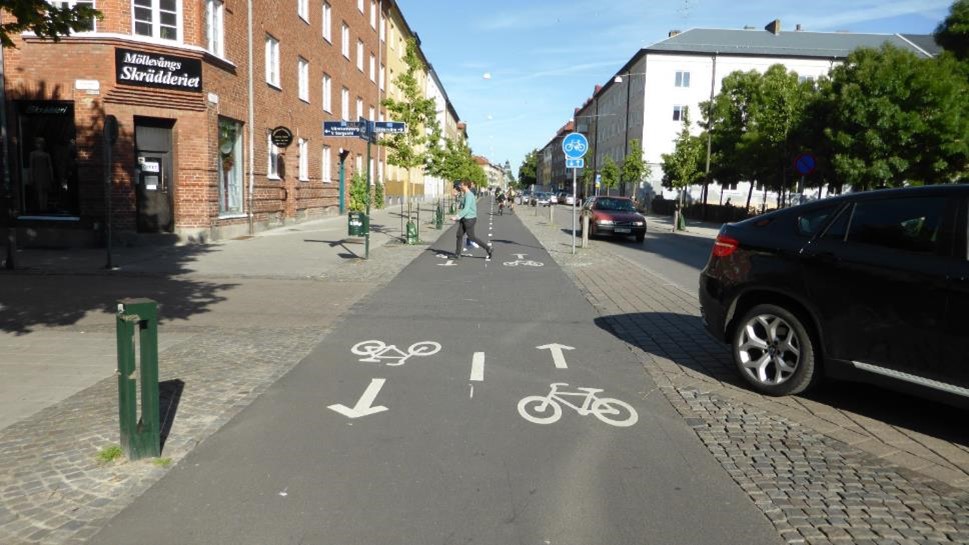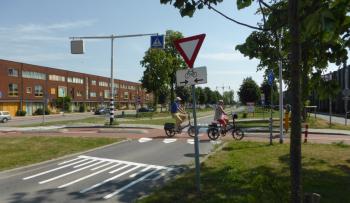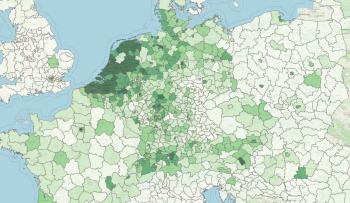
ECF cycle infrastructure factsheet: at-grade, uncontrolled crossings
ECF releases new factsheet which compares and analyses safety requirements for at-grade uncontrolled cycle crossings
The European Cyclists’ Federation (ECF) has published a new factsheet comparing and analysing safety requirements for at-grade uncontrolled cycle crossings across cycling standards and guidelines from 11 European countries. The report serves as a meta-analysis of requirements and recommendations across a diverse range of climates, levels of cycle use, population densities and topographies. Its recommendations contribute to the ongoing discussions on the United Nations Economic Commission for Europe level on quality requirements for cycle infrastructure.
Why are crossings important?
Even on physically segregated cycle infrastructure, cyclists still need to interact with motorised vehicles at crossings. Poorly designed crossings characterised by confusing layouts, speeding cars or insufficient visibility – might negate the safety benefits of segregation between the crossings.
Scope
The factsheet analyses requirements for at-grade, uncontrolled crossings, between cycle traffic on a cycle track and lateral motorised traffic. This includes, for example, a cycle track along a major road crossing a minor arm of an X- or T-intersection, or a cycle track crossing a road in between intersections (mid-block).
The parameters which appear across most of existing standards and guidelines are:
- maximum speed of motorised traffic
- maximum volume of motorised traffic, usually with different threshold with and without a median traffic island
- maximum number of lanes to cross and length of crossing
- minimum width of traffic island, if present/needed
- visibility splay
Several additional parameters are provided for bent-out crossings of cycle tracks along priority road:
- distance between the cycle crossing and parallel carriageway
- minimum horizontal curve radii
- minimum length of straight cycle track section before the crossing
The set of parameters can be used to assess both existing crossings and designs under development.
Applicability and dimensions of the crossing
Volume and speed of motorised traffic, together with the category of cycle route, are the key factors influencing the choice of type of crossing between cyclists and motorised traffic. If the motorised traffic is low, up to 3,000-8,000 vehicles per day, a simple crossing suffices. For moderate volumes of traffic, up to 8,000-16,000 vehicles/day, a median island can help to simplify the traffic situation. For higher volumes and/or speeds exceeding 80 km/h, grade separated or traffic light controlled crossing are necessary (or, alternatively, reducing traffic speed and/or volume).
Shorter cycle crossings reduce the time spent by cyclists in conflict zone. It is particularly dangerous when cars have multiple lanes in the same direction.
|
|
Basic cycle route |
Main cycle route |
Cycle highway |
|
Max speed of intersecting traffic [km/h] |
80 |
70 |
50 |
|
Max volume of intersecting traffic – without central traffic island [PCU/day] |
8,000 |
5,000 |
3,000 |
|
Max volume of intersecting traffic – with central traffic island [PCU/day] |
16,000 |
12,000 |
8,000 |
|
Max number of lanes to cross [lanes] |
2 |
1/direction |
1/manoeuvre |
|
Max length of the crossing [m] |
- |
8.0 |
7.0 |
|
Traffic island width [m] |
2.5 |
3.0 |
4.0 |

N25 road reduced to single lane per direction when approaching at-grade cycle crossing. Oud-Heverlee, Belgium.
Priority on the crossing and visibility splay
The priority on the crossing – whether the cyclists or the motorists have the right of way – should be established by appropriate traffic signs.
If a cycle crossing is located on an intersection, the priority on the crossing should be aligned with the priority on the intersection. In particular:
- A cycle track along a priority road should have priority over a road on which a “give way” or a “stop” sign is placed.
- Cyclists crossing a carriageway of a priority road should give way to vehicles travelling on the priority road.
On crossings between intersections, priority should be established by appropriate traffic signs, taking into account the role of the cycle route and the role of the road crossed.
The priority decision determines the visibility splay that needs to be ensured at the crossing. If the cycle track has the right of way, motorists need to be able to see the approaching cyclist. If the carriageway has the right of way, cyclists need to be able to see the approaching motor vehicles. For example, if a main cycle route has a priority over a road, a driver should be able to see already 10 m before the crossing a cyclist 22 m before the crossing. On the other hand, if the cycle route does not have priority, the cyclist needs to see 4 m before the crossing the cars in a distance depending on the speed of traffic on the road, from 33 m on 30 km/h roads to 140 m on 80 km/h roads.

Insufficient visibility splay was a contributing factor in several crashes on the crossing. The problem has been remedied by making the street one-way, with contraflow cycling allowed. Warsaw, Poland.
Additional recommendations
Several additional recommendations appear across different guidelines:
- Raising a cycle crossing improves its recognisability and reduces the speed of motorised vehicles.
- On an intersection, the minor arm can be arranged in a form of so-called “exit”, with continuity of cycle track and sidewalk across the whole crossing.
- If a cycle crossing is located further than 5-15 m from the intersection, it should be signed with separate signs establishing the right of way.
- If a cycle crossing is bidirectional, signage should indicate to the approaching drivers that they need to expect cyclists from both directions.

So-called exit from a residential street, with continuity of cycle track across the minor arm of an intersection. Malmö, Sweden.
Download the report
You can download the full report here.
Topics:
Contact the author
Recent news!
Contact Us
Avenue des Arts, 7-8
Postal address: Rue de la Charité, 22
1210 Brussels, Belgium









